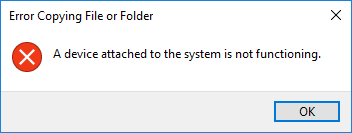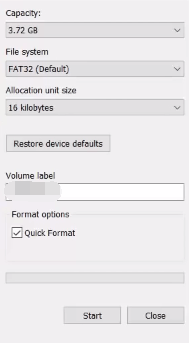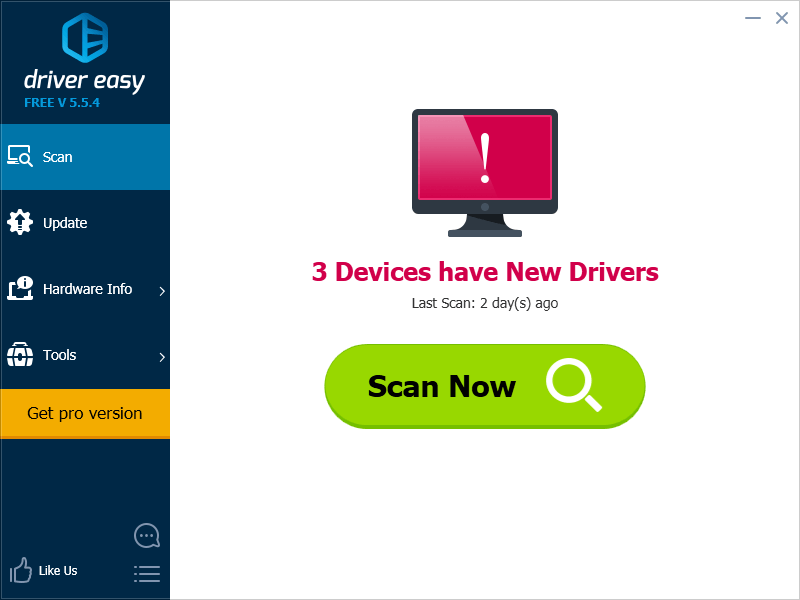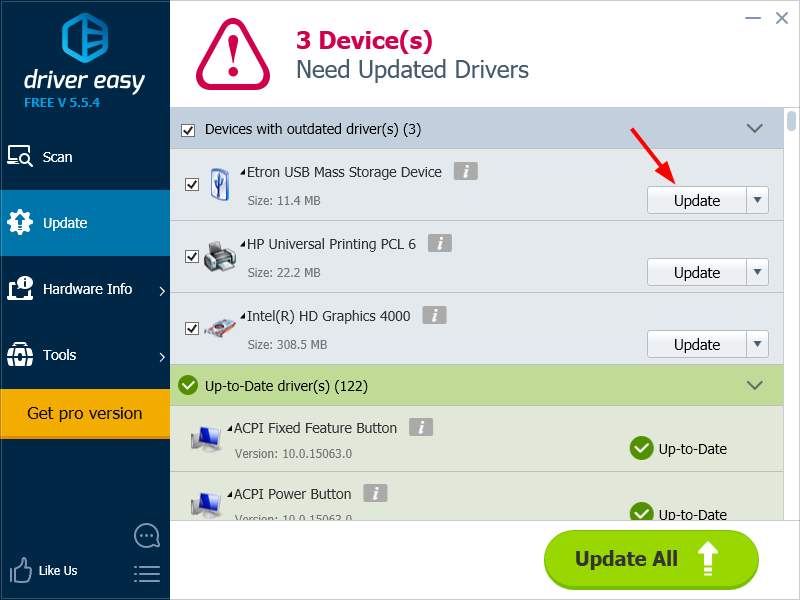
Many Windows users have reported that they have got an error telling “A device attached to the system is not functioning“. This error usually occurs when they are trying to copy files from a USB storage device or when they are using some program like BitLocker.
This is an annoying issue. You are probably trying hard to find a solution to this problem. But don’t worry. It is possible to fix this error.
Here are six methods you can try. You may not have to try them all. Just work your way down the list until you find the one that works for you.
Method 1: Reconnect your device
Method 2: Restart your computer
Method 3: Format your device
Method 4: Reinstall your device driver
Method 5: Run SFC scan and DISM command
Method 6: Restore or reset your Windows
Method 1: Reconnect your device
You may encounter this error because of the incorrect connection between your USB storage and your computer. Maybe the connector is not properly connected to the USB port, or the cable you use is defective. You can try reconnecting your device and make sure it is seated firmly to your computer. Then check to see if you get rid of the device attached not functioning error. Or you can try a different USB data cable, as it is often helpful for fixing the error.
Method 2: Restart your computer
It is also possible that there are corruption issues in your operating system so that you see the “A device attached to the system is not functioning” error. A restart of your computer can help you get rid of these issues. Try restarting your computer and see if the error disappears.
Method 3: Format your device
You may also see the error because your USB storage device is not properly formatted. You can format your device to see if this fixes this error. To do so:
1) Back up your data in your USB device using another computer
2) Open File Explorer (on your keyboard, press the Windows logo key and E at the same time).
3) Right-click your USB device and then select Format.

4) Configure the format settings, and then click Start.

5) Try using your USB device to transfer some files and see if the error disappears.
Method 4: Update or reinstall your device driver
The error may also occur when you are using the wrong device driver or it is out of date. You can try update or reinstall your device driver to see if this fixes your problem. If you are not confident playing around with drivers, you can do it automatically with Driver Easy.
Driver Easy will automatically recognize your system and find the correct drivers for it. You don’t need to know exactly what system your computer is running, you don’t need to risk downloading and installing the wrong driver, and you don’t need to worry about making a mistake when installing.
You can download and install your drivers by using either Free or Pro version of Driver Easy. But with the Pro version it takes only 2 clicks (and you get full support and a 30-day money back guarantee):
1) Download and Install Driver Easy.
2) Run Driver Easy and hit the Scan Now button. Driver Easy will then scan your computer and detect any problem drivers.

3) Click the Update button next to your USB device to download the latest and correct driver for it. You can also hit the Update All button at the bottom right to automatically update all outdated or missing drivers on your computer (this requires the Pro version — you will be prompted to upgrade when you click Update All).

You can also uninstall the storage device driver using Driver Easy (this also requires the Pro version). This is useful especially when you try to reinstall the driver of your device.
To reinstall the driver, open Driver Easy and go to Tools -> Driver Uninstall. Then select your device and click the Uninstall button. Your driver will be uninstalled very quickly.

Method 5: Run SFC scan and DISM command
There may also be corrupted files in your system that lead to the error. Your can run SFC (System File Checker) scan and DISM (Deployment Imaging and Servicing Management) command to scan and repair your computer:
1) Click the Start button, and the type “cmd“. Right click Command Prompt in the list of results and select Run as administrator.

2) To run SFC scan, type “sfc /scannow” and press Enter on your keyboard.
![]()
3) To run DISM command, type “dism /online /cleanup-image /restorehealth“. and press Enter.
![]()
4) Restart your computer. Then check to see if the error is fixed.
Method 6: Restore or reset your Windows
Maybe you have tried all of the methods above and the problem still exists. At this time you may need to restore or reset your Windows. You can restore your system to a restore point if you have one. You can also use your Windows installation media to reinstall or reset your Windows. If you are using Windows 10 and you want to reset it, you can check this guide.





